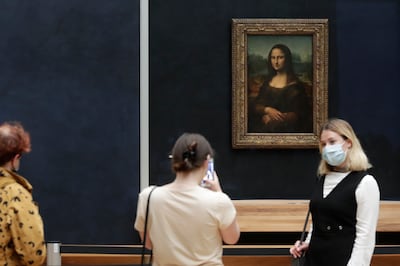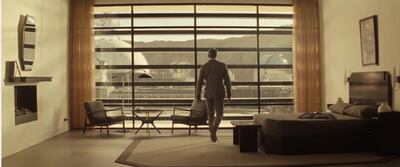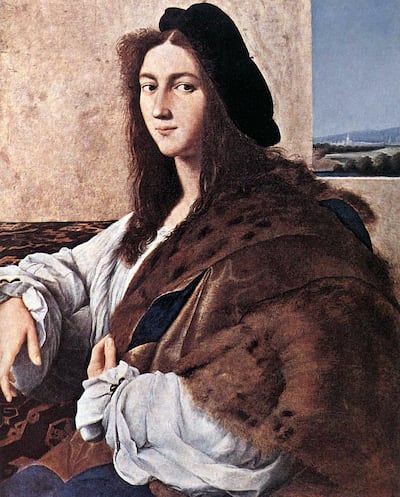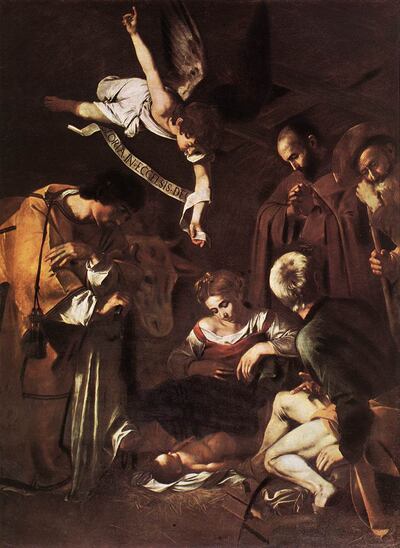The world's most famous art theft happened in Paris on August 21, 1911.
Vincenzo Peruggia, an employee at Paris's Louvre Museum, hid in a broom cupboard and waited until the museum closed.
In the depth of the night, he crept out of his hiding place and snatched the Mona Lisa from the wall.
Peruggia, who was 29 at the time of the theft, kept Leonardo da Vinci's masterpiece in a trunk in his apartment in Florence, Italy, for the next two years.
He was caught after contacting a Florence art gallery owner to seek a reward for returning the piece to Italy, where he believed it should be kept.
The theft and recovery was reported around the world, propelling the Mona Lisa to the international level of fame it enjoys to this day.

While this story ended happily, many artworks by some of the most famous artists in the world are still missing, lost to the mists of time or to the sealed vaults of billionaire private collectors.
From Raphael and Vincent van Gogh, to Claude Monet and Paul Cezanne, here are eight of the world’s most famous stolen paintings that have never been recovered.
'Poppy Flowers' by Vincent van Gogh
The painting was stolen from the Mohamed Mahmoud Khalil Museum, Cairo, in August 2010.
Valued at $50 million, it was thought to have been painted in 1887, three years before Van Gogh’s death, and was heavily influenced by the work of Adolphe Monticelli.
After the theft was discovered, Egyptian officials believed they had found the culprits — two Italian men who were stopped boarding a plane to Italy from Cairo — but this proved a false lead.
The painting had previously been stolen from the same museum on June 4, 1977; it was recovered 10 years later in Kuwait.
It remains missing.
'Le Pigeon aux Petits Pois' by Pablo Picasso

Eagle-eyed movie buffs may have spotted this painting in the 2015 James Bond film Spectre, hanging over Bond’s bed when he is held prisoner in Blofeld’s compound.
This clever touch by the film’s production team highlights the fact that the piece has never been recovered.
Valued at $123 million, The Pigeon with Green Peas was painted in 1911 and stolen in from the Musee d’Art Moderne de la Ville de Paris in May, 2010, along with four other artworks including pieces by Henri Matisse and Amedeo Modigliani.
The burglar, Vjeran Tomic, entered through a removed window pane while the museum alarms were not working.
He was later caught and his accomplice, Yonathan Birn, insisted he threw the art in a rubbish bin, which police do not believe, leaving the case open.
'View of Auvers-sur-Oise' by Paul Cezanne
Believed to have been painted between 1879-80, the artwork depicts a landscape in Northern France, with Cezanne having previously lived in the small village of Auvers-sur-Oise.
On New Year’s Eve 1999, a thief broke into the Ashmolean Museum at the University of Oxford, England, and stole the painting, using the nearby fireworks and raucous Millennium celebrations as cover.
Climbing up scaffolding and breaking through a skylight, the burglar dropped a smoke bomb into the gallery, climbed down a rope ladder and cut the picture from the frame.
UK police believed the $4 million piece had been stolen to order, as works by Auguste Rodin, Pierre-Auguste Renoir and Henri de Toulouse-Lautrec were left untouched.
The case remains open with the FBI's website still urging those with information to come forward.
'Portrait of a Young Man' by Raphael

Believed to be a self-portrait of the artist, the piece, which is valued at more than $100 million, was taken from Poland by the Nazis and has not been seen since 1945.
When Germany invaded the country, Prince Augustyn Jozef Czartoryski rescued many works, including Portrait of a Young Man, from his family’s Czartoryski Museum and hid them at a residence in Sieniawa in south-eastern Poland.
Found by the Gestapo, the works were given to Hans Frank, who Adolf Hitler had appointed as the governor of Nazi-occupied Poland. The painting and others were later sent to become part of Hitler’s personal collection in Linz.
In January 1945, just before the Soviet offensive, Frank brought the paintings back from Germany to Krakow to display at his residence, Wawel Castle.
Following Frank’s execution in 1946, many plundered artworks were recovered, but along with 842 other artefacts, the Raphael piece was never seen again.
'The Storm on the Sea of Galilee' by Rembrandt van Rijn
Rembrandt van Rijn’s piece was stolen during a heist totalling more than $500 million, which also included Johannes Vermeer’s The Concert.
The artworks were snatched from the Isabella Stewart Gardner Museum in Boston, US, in the early hours of March 18, 1990.
Museum guards admitted entry to two men posing as police officers who claimed to be responding to a call about a disturbance.
The two thieves tied up the guards and set to work stealing 13 works, including pieces by Edgar Degas and Edouard Manet.
Rumours circled about who the perpetrators were, which included the mafia, criminals with links to the IRA, and a conman who had previously tried to rob an art museum.
None of the pieces have ever been found, and the empty frames remain hanging on the walls of the museum.
'Nativity with St Francis and St Lawrence' by Caravaggio

Caravaggio’s work, which measures almost six square metres, was stolen from the Oratory of San Lorenzo in Palermo, Sicily, on October 16, 1969.
It was removed from its frame by the thieves — police suspected two — and taken from the church, which was then ransacked of other artworks and items, including benches inlaid with mother of pearl.
Valued at $20 million, the main suspects remain the local Sicilian mafia, and one informant told police that mob boss Salvatore Riina used it as a floor mat.
A replica commissioned in 2015 hangs in its place and art historians have theorised the original was destroyed during the Irpinia earthquake in southern Italy in 1980.
'Francis Bacon' by Lucian Freud

The 1952 portrait British artist Lucian Freud drew of his close friend and fellow painter Francis Bacon was stolen from the Neue Nationalgalerie in Berlin on May 27, 1988, and has never been recovered.
A security guard reported the piece missing around 3pm. However, a photograph taken at the exhibition around 11.30am showed the portrait still on the wall, and a visitor said they had noticed it missing shortly after noon, narrowing the time of the theft down to half an hour.
Freud designed his own wanted poster for the portrait, but it has never been returned.
'Charing Cross Bridge, London' by Claude Monet
Impressionist painter Claude Monet’s piece Charing Cross Bridge, London, was stolen alongside his work Waterloo Bridge as part of the Kunsthal Museum theft on October 16, 2012.
The Rotterdam art museum was targeted by a gang of thieves, with the alleged gang arrested in Romania in July 2013.
Olga Dogaru, the mother of a man called Radu, who admitted to taking part in the heist, told police she burned all the artworks to protect her son.
She later denied her admission during a court hearing.
Among the other stolen works, which are also still missing, were Picasso’s Tete d'Arlequin, Paul Gauguin's Femme devant une fenêtre ouverte, Henri Matisse's La Liseuse en Blanc et Jaune, and Lucian Freud's Woman with Eyes Closed.

















